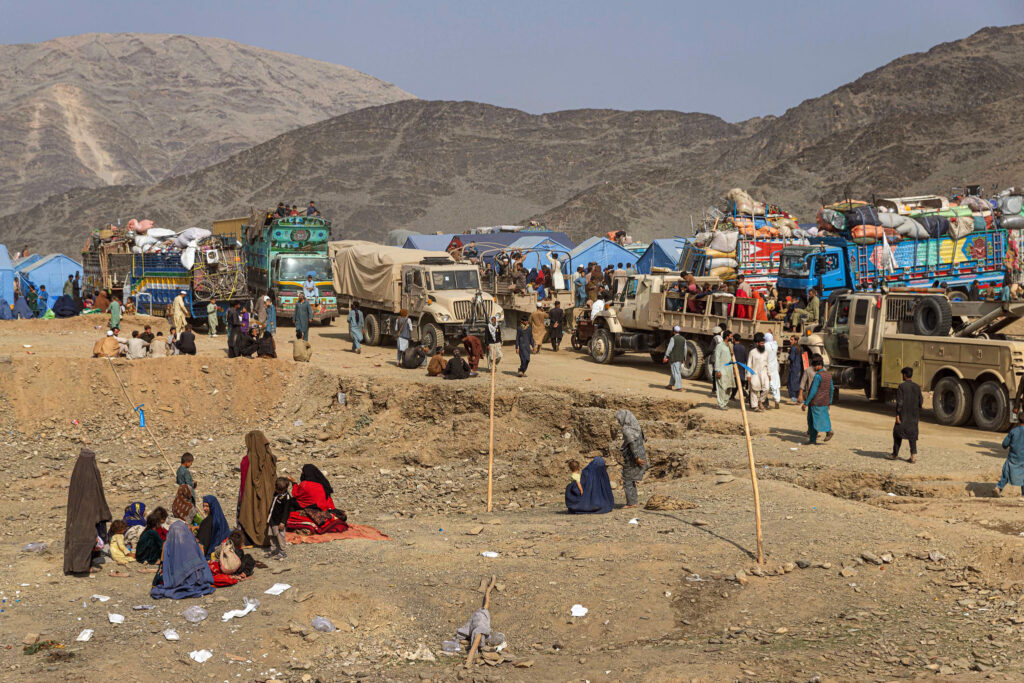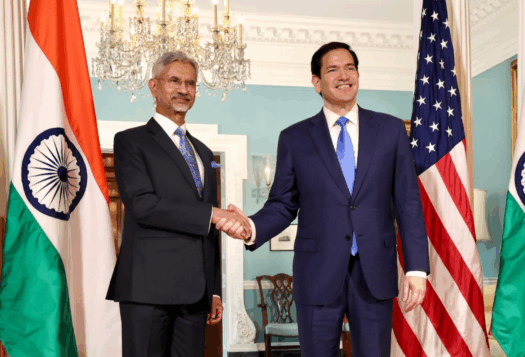
August 15, 2024, marked the third anniversary of the Taliban’s return to power in Afghanistan. Back then, along with the Taliban, Pakistan’s establishment was also euphoric about the United States’ withdrawal from the region. The then-Pakistani prime minister, Imran Khan, famously equated the fall of Kabul to the Taliban breaking the shackles of slavery. For many in Pakistan’s military elite, the return of the Taliban meant a secure western border. These strategists assumed that Pakistan’s security forces could now concentrate on the eastern border with India.
However, three years later, terror activity on Pakistan’s western border is significantly higher as compared to during the previous Afghan government’s tenure. Simultaneously, Pakistan’s relationship with the Afghan Taliban has suffered. Three major factors have contributed to the worsening of ties: differing perspectives on the Durand Line, the threat posed by the Tehreek-e-Taliban Pakistan (TTP), and the Pakistani establishment’s decision to challenge the Afghan Taliban. This fallout between Pakistan and the Afghan Taliban has broader implications for the stability of the region.
The Pak-Afghan Border Issue
The Pakistani establishment overestimated their understanding of the Afghan Taliban. As a result, Pakistan neglected the Taliban’s interests and ignored their claim on territory, leading to growing disagreement over the Durand Line.
The Durand Line is a product of an agreement between a British diplomat and the Amir of Afghanistan signed in 1893. After independence, Pakistan inherited the border from the British. However, Afghanistan withdrew from the agreement and refused to accept Pakistan as a successor state. Since then, no Afghan government has recognized the Durand Line as a legitimate border. Afghans see the Durand Line as a colonial tool used by the British to divide Pashtuns. The Afghan Taliban considers it an unsettled matter and has objected to Pakistan fencing the border. Afghan Taliban fighters have also physically intervened to stop the fencing of the border, leading to skirmishes between the two forces.
Three major factors have contributed to the worsening of ties: differing perspectives on the Durand Line, the threat posed by the Tehreek-e-Taliban Pakistan (TTP), and the Pakistani establishment’s decision to challenge the Afghan Taliban.
The shadow of the Durand Line and cross-border terrorism have led to the frequent closure of border checkpoints. The movement of goods and people has been adversely affected, highlighting the clear economic drawbacks tied to Rawalpindi’s misjudgment of the Taliban. Afghans have always asserted their independence, especially when foreigners intervene. Pakistan should have handled the border issue with more sensitivity to protect its economic interests and maintain ties with the Afghan Taliban.
Resurgence of the TTP: Stronger and Structured
Another thorn in the relationship between the two neighboring states is the TTP. With the return of the Afghan Taliban in Kabul, the TTP pledged its allegiance to the regime and proclaimed them as a role model. TTP leadership encouraged their fighters to achieve a similar victory against Pakistan as the Afghan Taliban achieved against the United States. Consequently, terror attacks in Pakistan increased by 73 percent in the two years since the Taliban took over Kabul in August 2021 as compared to the same time period before their takeover, with no sign of TTP’s decline in sight.
The TTP now has a more structured central command, an expanded footprint through mergers with smaller groups, and is equipped with U.S. weapons left behind during the withdrawal. As such, it has emerged as a formidable challenge to the Pakistan Army. The change in the operational tactics of the TTP to target the armed forces instead of civilians has further complicated the matter for Pakistan. TTP’s targeting of security personnel, Chinese workers, and Chinese interests has exacerbated the crisis for Pakistan by raising the stakes. Furthermore, the presence of a friendly ruler in Kabul gives TTP an additional advantage to fall back to safety after carrying out attacks in Pakistan.
The Pakistani Establishment’s Limitations
Pakistan’s polycrisis — a phenomenon of multiple crises such as political, economic, and security crises at the same time — has put its establishment in a conundrum on how to manage relations with the Afghan Taliban and tackle the challenge from the TTP.
The political instability in Pakistan has deterred any consensus on handling the TTP challenge. Pakistan Tehreek-e-Insaf (PTI) and other mainstream religious and nationalistic parties oppose kinetic operations against TTP, and this opinion resonates with the people of Khyber Pakhtunkhwa (KP). The fallouts of Operation Zarb-e-Azb and the absence of local support make it challenging for the Pakistan Army to conduct large-scale operations. The loss of popular support after this year’s general elections has greatly limited the maneuverability of the establishment in managing the crisis, especially the TTP challenge.
The economic crisis is another major reason that has discouraged Pakistan from launching a kinetic offensive like Zarb-e-Azb. In September 2024, the IMF approved the 25th bailout for Pakistan. After its withdrawal from Afghanistan, the absence of U.S. help at the tactical level will imperil the Pakistan Army’s operational capabilities.
A Flawed Strategy of Peace Talks
Pakistan’s decision to allow the TTP fighters to return and engage in peace talks has proven disastrous. TTP perceived Pakistan’s eagerness to engage in peace talks as a weakness. The TTP exploited Pakistan’s vulnerability, strengthened itself, and continued terror attacks. Eventually, the talks met the same unfateful end as previous efforts to engage with the TTP. The Pakistani establishment overlooked the historical and ideological ties between the Taliban and the TTP, resulting in a flawed approach.

Challenging the Afghan Taliban
The Pakistani government has adopted several policies that have escalated the crisis between the Taliban and Pakistan.
Pakistan’s strategy to repatriate Afghan refugees has been ruinous for Taliban-Pakistan relations. The Afghan Taliban have expressed their discontent and warned Pakistan to change course. The intention behind the repatriation of refugees was to force the Taliban to restrain the TTP. Instead, the policy has tarnished Pakistan’s image not only among the Afghan people but also in the eyes of the Taliban government. The limited international goodwill that Pakistan gained for hosting the refugees was also undone.
Pakistan’s air strikes inside Afghanistan were another misstep. Pakistan was targeting TTP hideouts in Afghanistan to deter the TTP and signal to the Afghan Taliban its willingness to take offensive action. However, the Taliban’s reaction in kind failed to achieve Pakistan’s desired objective. In the absence of a decisive victory against the Taliban in this exchange, Pakistan appeared weak against its Western neighbor. The policy decisions that Pakistan made generated anti-Pakistan sentiment among Afghans, which the Taliban latched onto to legitimize itself.
Implications of the Pakistan-Taliban Crisis
A continued crisis threatens internal, regional, and global stability. Afghanistan and Pakistan face acute challenges related to their economies, food security for their populations, internal instability, and governance issues. However, prolonging or escalating the crisis will distract their attention from these pressing concerns or deteriorate the situation further. For instance, Pakistan’s decision to repatriate Afghan refugees will divert the Afghan Taliban’s financial resources away from their counterterrorism efforts in their own country.
Pakistan’s polycrisis — a phenomenon of multiple crises such as political, economic, and security crises at the same time — has put its establishment in a conundrum on how to manage relations with the Afghan Taliban and tackle the challenge from the TTP.
If tensions between the Taliban and Pakistan continue to rise and the countries are distracted by each other, terror groups like Islamic State-Khorasan Province (ISKP) could take the opportunity to expand and carry out terror attacks in the region and other parts of the world. The presence of groups like ISKP, Al-Qaeda, Al-Qaeda in the Indian Subcontinent, and TTP remains a cause of concern for the United States and its allies. A distracted Taliban would not serve U.S. counterterrorism interests.
China would also not prefer a distracted power in Kabul, especially since the presence of the East Turkestan Islamic Movement ETIM in Afghanistan continues to be a security concern for Beijing. The rise in attacks on Chinese projects and Chinese people is as much a result of Pakistan’s weak security apparatus as a lack of cooperation between the Taliban and Pakistan on the issue of terrorism. A lack of cohesion in counterterrorism efforts only serves to strengthen the terrorists. Therefore, a prolonged crisis is not in anyone’s interest.
Also Read: What Went Wrong with Pakistan’s “Strategic Depth” Policy?
***
Image 1: Muhammad Furqan Photography via Getty Images
Image 2: UN Women Asia and the Pacific via Flickr


